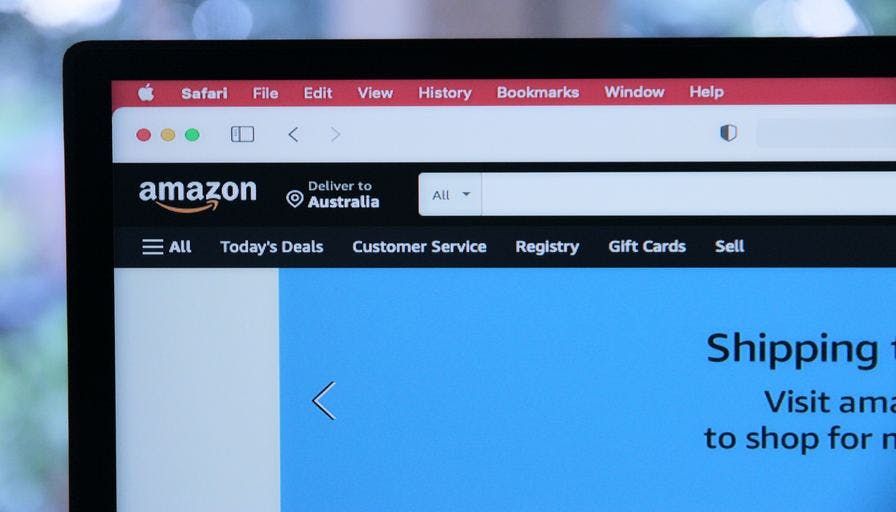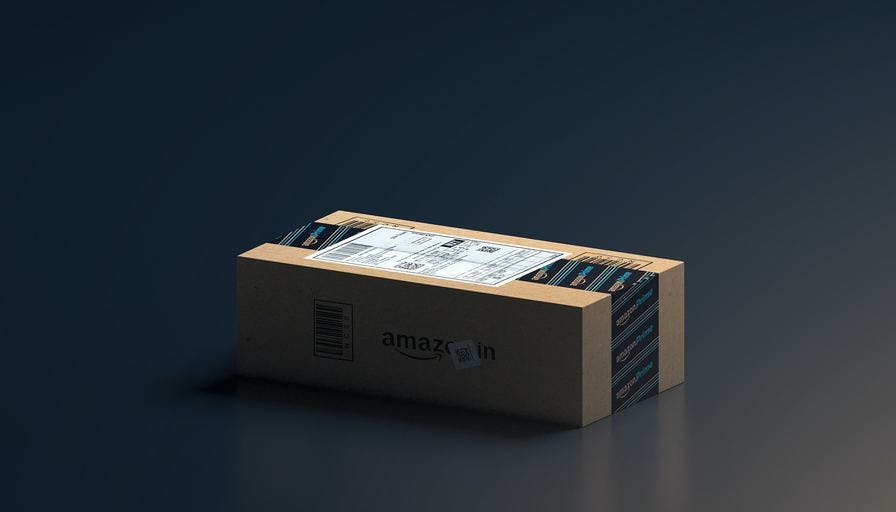Amazon SEO: The Ultimate Guide
Published on by Matthias Habel

Amazon has not only established itself as the number one sales platform, but is also the ultimate search engine for online shopping. However, when it comes to selling successfully on the marketplace, a good ranking in the search results lists is essential to increase product visibility, boost purchase rates, and generate more sales.
What is Amazon SEO?
The majority of customers on Amazon only buy products on the first two pages of search results. Products that are placed further down the list become less and less interesting and achieve lower sales rates. This is partly because customers usually only search the first few pages. On the other hand, Amazon enjoys a high level of trust among customers. Products that Amazon presents in the top positions are considered worthwhile by customers. Amazon SEO has now developed into a discipline in its own right, which online shop operators should definitely consider.
Influence of the Amazon algorithm (A9)
Amazon's A9 algorithm determines the ranking of search results for a specific search query. The algorithm sorts the results based on the descending probability of a purchase. Amazon keeps the exact functioning of the A9 algorithm and the weighting of the various factors to itself. However, based on various sources and experience, it can be determined that the algorithm is influenced by both direct and indirect factors.
The direct factors, also known as relevance factors, can be directly influenced by sellers. These include factors such as product title, product description, bullet points, and search terms. Updating and optimizing these relevance factors therefore offer great potential for improving Amazon rankings.
Indirect factors, also known as performance factors, are influenced by external circumstances and cannot be directly controlled. These include factors such as sales figures, reviews, and return rates. Although these factors cannot be directly manipulated, sellers can take measures to improve their performance and thus indirectly influence their Amazon ranking.
Overall, the main optimization potential for an improved Amazon ranking lies in the relevance factors that can be directly influenced by sellers.
Direct Amazon ranking factors
Direct ranking factors have an immediate impact on a product's ranking. These include various relevance factors such as product title, bullet points, backend keywords, product category, and delivery terms. Performance factors such as click-through rate, conversion rate, sales frequency, return rate, and seller ratings also play a decisive role.
Product title
The product title is the most prominent position for relevant keywords in a product listing. For this reason, the most important keywords should be included in the title. However, care should always be taken to comply with Amazon's style guides and not violate them. In addition to the length of the product title, which depends on the product category, the correct order of the elements in the title is also important, e.g., the brand name should come first.
Furthermore, the most important features of the product, such as size, weight, material, and flavor, should be placed at the beginning of the title if possible, as only the first 80 characters of the product title are displayed when viewed on smartphones.
Bullet points (product attributes)
In most product categories, sellers have the option of defining 5 bullet points or attributes (in some exceptions, up to 7 bullet points can be used). In addition to the targeted placement of relevant keywords, the bullet points should primarily serve to highlight the unique selling points and product features.
When formulating bullet points, it is particularly important to keep mobile optimization in mind. On smartphones, a maximum of 3 bullet points are usually displayed, sometimes even fewer. Therefore, the most important product information should be placed in the first three bullet points.
The length of each individual bullet point should not exceed 15 words.
Product description
The Amazon product description is often neglected or even forgotten by sellers during the optimization process. However, the product description offers the opportunity not only to place keywords, but also to convey relevant information that did not find a place in the bullet points and title.
Product descriptions should be carefully maintained and optimized, especially for products that require explanation. The maximum length of a product description is 2,000 characters, which provides plenty of space to communicate product features in detail.
Product descriptions are particularly important for sellers without trademark rights who cannot use A+ content for their products.
Backend keywords
Each product can be individually tagged with backend keywords or general keywords. The maximum length of general keywords is 249 bytes and should not be exceeded. It is important not to use competitor brand names, ASINs, filler words, numbers, or punctuation marks. Instead, it is recommended to include synonyms, functions, occasions, and English keywords in the general keywords.
Product features
The product characteristics that need to be entered are often neglected, yet they vary greatly depending on the product category (e.g., taste, ingredients, units for food or materials, color, energy efficiency class for DIY products). It is important to enter as many characteristics as possible correctly, as this increases relevance.
Product images
High-resolution product images from different perspectives build trust in the product and answer many customer questions. First impressions are crucial: the image and title are the first elements customers see, and they have a significant influence on whether the product is clicked on at all. Choose an image size that allows customers to use the zoom function and see details clearly. It is important to convince customers of the quality and features of the product with the product images alone.
Sales history & return rate
Amazon tracks the entire history of a product and takes this into account when determining its ranking. Factors such as click-through rate (CTR), conversion rate, total sales, return rate, and sales performance since release all play a role. Products with a long-term poor sales history have a harder time climbing the rankings, as Amazon strives to place the best-converting products at the top. Based on past performance, Amazon assumes that other products will sell better. For this reason, it takes more patience for “older” products to climb the rankings than it does for new products.

Performance factors
Although performance ranking factors are not directly included in the creation of the ranking, they do have an influence on the direct factors. These indirect factors can often have a positive effect on the conversion rate and click-through rate in particular, which in turn are highly significant for positioning on search results pages.
Conversion rate
Amazon analyzes the conversion rate of a product for each search term in order to draw conclusions about its relevance and performance. The higher the conversion rate of a product for a specific search term, the better the organic ranking of that product.
Click-through-rate
In addition to the conversion rate, the click-through rate is also crucial for assessing the relevance of a product for a search term. Clicking on a product result after a search indicates that the product is considered suitable. Optimizing the click-through rate, for example by improving the main image and revising the title, can improve organic placement in the long term.
Sales history of the product
The number of units sold plays a decisive role in the organic ranking of a product. The more units a product sells (regardless of whether this is organic or through paid advertising), the better its organic ranking.
Therefore, established sellers with successful products have a clear competitive advantage over new sellers on Amazon.
By placing targeted paid advertisements, the organic ranking of a product can also be improved in the long term.
Delivery terms (delivery times & shipping costs)
Customers on Amazon are accustomed to fast delivery times and free shipping. Therefore, Amazon compares the delivery conditions of individual products and prioritizes products that can be shipped quickly and, if possible, free of charge.
Delivery conditions therefore play a role as both a direct and indirect ranking factor. Directly, because Amazon favors products that offer customer-friendly delivery conditions. Indirectly, because customers are more likely to buy products (which leads to a higher conversion rate and click-through rate) that have low shipping costs and short delivery times.
Return rate
Amazon's goal is to display the best products for a specific search term. Therefore, it is short-sighted to focus exclusively on sales, click-through rates, and conversion rates. Amazon also takes customer feedback into account, especially with regard to return rates. If a product's return rate is too high, Amazon may proactively deactivate it.
Even if Amazon does not deactivate a product, it generally favors products with a lower return rate compared to the competition. More targeted advertising and a detailed product summary aimed at reducing the return rate can therefore not only save money, but also improve organic rankings in the long term.
Reviews
The number and quality of seller and product reviews have an indirect influence on the product listing. Problems with customer support or delayed deliveries can lead to poor performance and have a negative impact on the ranking. Therefore, it is important to ensure high customer satisfaction in order to achieve a better ranking.
To get positive reviews, similar tips apply as for a low return rate: provide sufficient honest information in the text and realistic product images so that customers know what to expect. There are various methods for generating as many reviews as possible, but not all of them are in line with Amazon's guidelines.
Improving Amazon rankings: Further measures
To improve organic ranking, there are additional measures that can be considered:
Amazon PPC
When new products are launched, inventory issues arise, or a product performs poorly, its ranking may drop. In such cases, a targeted Amazon PPC strategy can help to quickly improve the Amazon ranking and thus increase organic sales.
By using Sponsored Products Auto campaigns, it is easy to generate additional reach without having to conduct your own keyword or ASIN research. With manual Sponsored Products campaigns (Broad, Phrase, Exact), you can bid on previously researched and relevant keywords to achieve a higher conversion rate than with Auto campaigns. With the Sponsored Products campaign type with product targeting (PAT), competing products can be used directly as landing pages to strengthen your own product and weaken the competition.
In addition, new or weaker products can be promoted alongside already well-performing products using Sponsored Brands campaigns to benefit from their strengths and strengthen brand awareness. After successful brand registration, Sponsored Display campaigns are also available, which can make a positive contribution to rankings through their wide reach and retargeting campaigns, converting clicks into purchases and turning one-time buyers into repeat buyers.
A well-designed campaign setup is therefore crucial for a good Amazon ranking and for increasing organic sales to the highest possible level.
A+ Content
A+ Content or Premium A+ Content (available under certain conditions) is playing an increasingly important role in the ranking of products on Amazon, albeit indirectly. A+ Content provides detailed information about product characteristics, quality, functional features, special features, and the brand in general. A+ Content improves the conversion rate and ultimately the Amazon ranking, especially for mobile displays and users who are attracted by visual elements such as images and videos. Optimal A+ Content contains a variety of information formats, including text and images, to answer potential customers' questions in advance. In addition, A+ Content offers the option of linking to other products for cross-selling and upselling, allowing best-selling products to support the ranking of other products. Providing compelling A+ Content can therefore improve visibility, sales figures, and ranking on Amazon.
Discounts, offers, coupons
Deals offered by Amazon to marketplace sellers are important tools for improving the ranking of your products. These include participation in major shopping events such as Spring Sales, Prime Day, Black Week, and Fall Prime Event, as well as regular deal promotions in between. These measures ensure that your products rise in the rankings in the short term and can benefit from this in the long term.
The increased buying interest generated by discounts usually leads to a rapid improvement in rankings. Through the targeted use of Amazon SEO (search engine optimization) and Amazon Advertising, deals can also influence rankings in the long term. It is important to adjust the amount of discounts to margins and competition and to choose the right time periods. The optimal approach varies depending on the product, seasonality, and competition.
Product availability
Product availability is one of the most important factors influencing a good ranking on Amazon. A product will only appear in Amazon searches if there is sufficient stock available. During periods when a product is unavailable, other products may overtake it in the rankings.
If you use the Amazon FBA (Fulfillment by Amazon) program, it is important to note that shipping to the Amazon warehouse and storage can take some time. Therefore, you should always ship several weeks in advance to ensure continuous product availability.
Continuous product availability is crucial to achieving a good ranking on Amazon and ensuring that your products are visible to customers and can be purchased.
Price
Amazon does not automatically favor products with lower prices, but rather places value on customer satisfaction. Since customers generally tend to favor lower prices, products with attractive prices are often clicked on and purchased more frequently and generally have a higher conversion rate than competing products. It is therefore important to offer competitive prices in order to convince customers of the attractiveness of your product and improve your ranking in search results.
Main image
The main image plays a crucial role in your product images and is often the first visual contact between potential customers and your product. It should encourage customers to click on the product detail page. A professional and high-quality presentation of the product leads to an improved click-through rate. In addition, the main image should clearly and unambiguously display the most important product features so that potential customers know exactly what the product is before clicking on it. Poor and inaccurate presentation, on the other hand, increases the risk that visitors will leave the page without taking a closer look at the product. An improved click-through rate and conversion rate both have a positive impact on Amazon product ranking.
Product video
A video has no direct influence on the assessment of a product's organic ranking. However, product videos can play a significant role in the purchasing decision, especially for products that require explanation. Videos enable potential customers to better understand the product, learn about its features and benefits, and strengthen their confidence in the purchasing process. It is therefore advisable to consider the possibility of an informative and appealing product video for such products in order to positively influence the conversion rate and ultimately the ranking.
Conclusion
Optimizing your Amazon ranking takes time, knowledge of the Amazon ranking algorithm, and thorough keyword research. There are various ways to improve your organic Amazon ranking. One recommended option is to seek support from a specialized Amazon agency that can help you optimize your Amazon ranking. With professional advice and support, you can invest in the long-term visibility of your products and further expand your success as an Amazon seller.
Frequently asked questions
Related Posts

